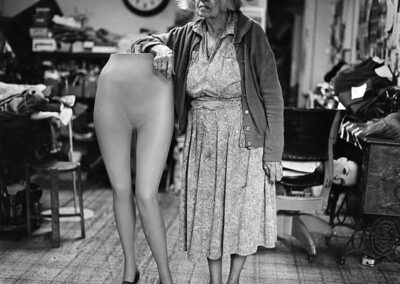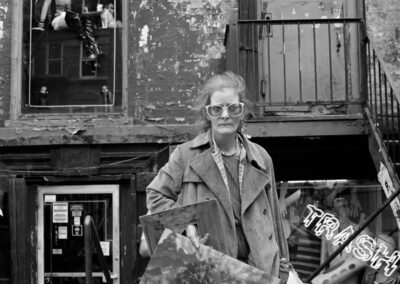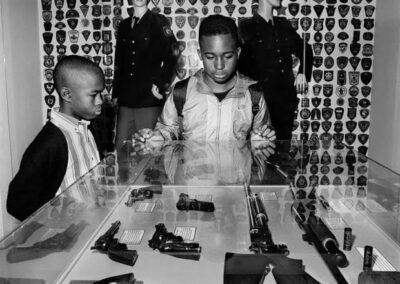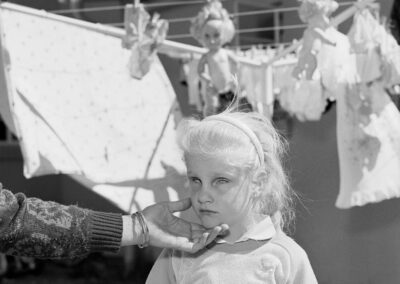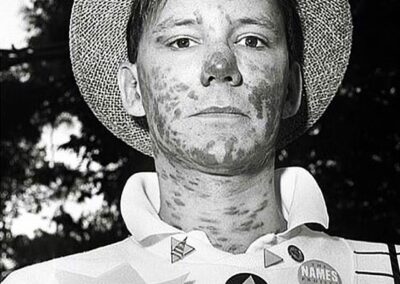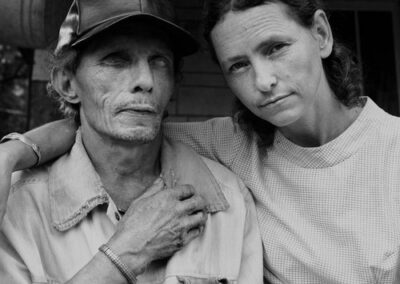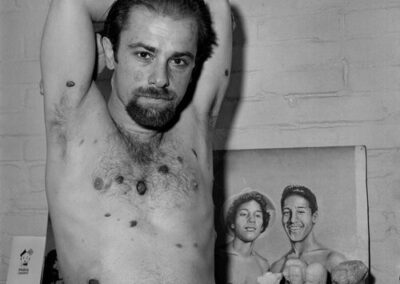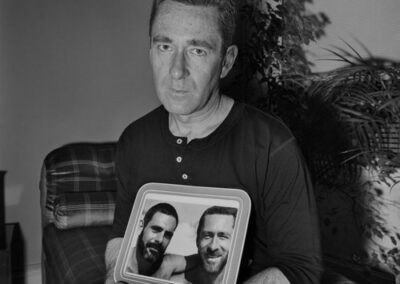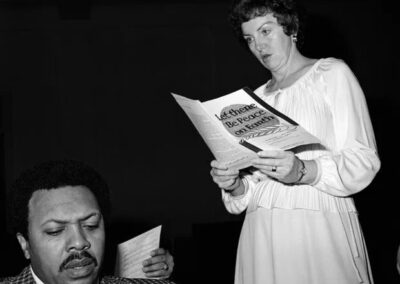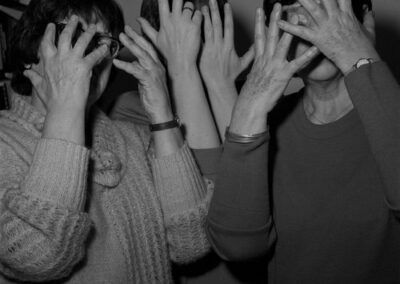The next Artist You Need To Know is Rosalind Fox Solomon.
Solomon (born 1930) is an American photographer based in New York City.
From her site : “Rosalind Fox Solomon has entered closed circles across a diverse range of cultures. She has captured defining moments of the 20th century, from documenting the American South in her project Liberty Theater, to her groundbreaking series Portraits in the Time of AIDS. She has made bodies of work outside of the United States in Europe, Africa, Asia, and Latin America.
Her talent lies in the capacity to interpret and photograph cultures in the places she travels. She incorporates the obsessions and anxieties that travel with her.”
Solomon was born in Illinois in 1930 : she would attend Goucher College in Baltimore and earned a Bachelor of Arts in Political Science in 1951.
Solomon joined the organization The Experiment in International Living, later becoming Southern Regional Director for the United States. This organization supported travelling to and living within communities on both a national and international level, fostering communications and interactions between peoples of different countries, nations and communities. This aesthetic surely helped shape her photographic work and especially the socio political and historical quality of the stories she told with her camera. While involved with The Experiment in Living, for example, Solomon was one of the participants in the March on Washington for Jobs and Freedom when Martin Luther King Jr. delivered his famous “I Have a Dream” speech.
She did not begin taking photographs until she turned 38, when she was living in Japan (again through her work with The Experiment project): Solomon found using an Instamatic camera was the most effective manner to bridge language and cultural barriers. When she returned to the U.S. in 1969, Solomon began using a Nikkormat and processed her own 35 mm film in her garden shed which she had converted to a darkroom.
Beginning in 1971 Solomon was studying intermittently under the renowned photographer and educator Lisette Model: three years later she began working with a medium format camera. Solomon works exclusively in black and white film : as her images have a documentary quality – though still rife with emotion and empathetic to her subjects – this makes a great deal of aesthetic and conceptual sense. In this way, her work intersects with a previous Artist You Need To Know Mary Ellen Mark.
She has had more than 30 solo exhibitions and more than 75 group exhibitions over her impressive career. Solomon’s photographs can be found in the collections of a number of significant institutions in both the United States and internationally. These include the MoMA, National Gallery of Art, Los Angeles County Museum, Metropolitan Museum of Art, SFMOMA, the Bibliothèque Nationale de France, Museo de Arte de Lima, National Gallery of Canada, the Rijksmuseum, and the Victoria and Albert Museum.
Solomon has also produced a number of books and collaborated on others. These include Union Depot: Photographed 1971–1973, Rosalind Solomon, Washington: May 15 – June 29, 1980, Earth Rites: Photographs from inside the Third World, Portraits in the Time of AIDS, Polish Shadow and The Forgotten.
In 2019, the ICP awarded Solomon a Lifetime Achievement award in recognition of her multi decade career where her work has often acted as both an artistic and historical documentation and interpretation of not just the United States but larger issues as manifest through people and places. Among her other awards is a National Endowment for the Arts Fellowship, a Lucie Achievement in Portraiture, and a Guggenheim Fellowship.
From Vulture Magazine : “[Her images] are more generous, even when she’s shooting questionable people and places. They’re about who the subjects think they are as much as who we see them as. The psychological layering is conflicted and oblique. “The depth is in the pictures, not what I say about them,” Solomon says. “They represent many strands of emotion and connect to realities — sociological, historic, and political — and I’m interested in the inner as well as the outer.””
A more detailed listing of her accomplishments can be seen here.
Much more about her life and career can be seen here (at her site, which also has links to several interviews and articles about Solomon’s work here) and here.



